These 22 hidden game techniques will totally change the way you play
You never waited till the nine count in Punch-Out!!
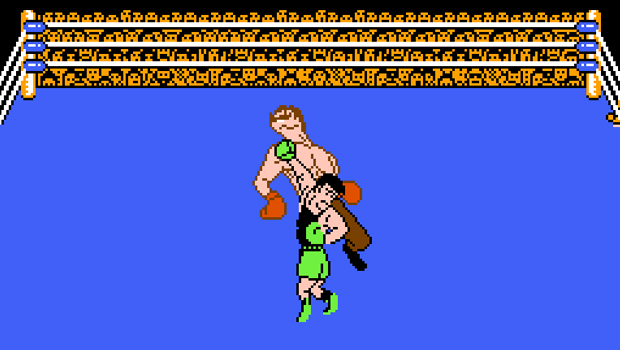
The classic boxing series is full of little strategies for downing each flamboyantly stereotyped opponent. But there are a few nifty tricks that may have eluded you during your tour through the various circuits, namely the One Count and Nine Count methods. As you might've guessed from their names, they both involve the progression of the countdown by that multitalented boxing referee Mario.
The One Count trick is an offensive one: If your enemy pops off the mat right away on the first count, a single star uppercut will knock him right back down. On the opposite side of the coin is the defensive risk-reward Nine Count tactic, where timing your recovery with the close-shave nine count will get you back into the fight with a full stamina bar. Also, you can press Select during mid-match cutscenes to regain health once a fight. Even if you didn't know that one, act like you did, because then people will respect you more.
You got hit during boss fights in Final Fight

You can't really blame Capcom for designing bosses in an arcade game that drain your lives and quarters like a vampire that feeds on money. But that doesn't make fighting said bosses any less frustrating. If only there was a way to reduce them from untouchable brutes to tenderized simpletons - but wait, there is! This is one of the oldest tricks in the book (that also carries over to other beat-em-ups from the same era), but with the dearth of arcades, it seems that newcomers are unaware of this thug-obliterating tip.
Cody's your best bet for pulling off the infinite combo; it's less effective as Guy and near impossible as Haggar (though he'll always be the mayor of our hearts). It's simple: Face your enemy, punch two or three times, then face away and punch before spinning back around and repeating the process. The baddie will be indefinitely stunned, and you'll never really finish your combo and push them away. Rinse and repeat until they're down for the count. This clever technique became such a staple that Capcom even referenced it in Street Fighter Alpha 3 with Cody's Final Destruction super move.
You didn't make death-defying spin-jumps in Super Mario World

Mario's feet have ended thousands of lives, crushing Goombas and unaware Koopas under the plumber's modest leather shoes. But his ordinary jump can only accomplish so much - which is why Super Mario World introduced the spin-jump, activated with a tap of the A button. Many players assumed that this move's only use was to destroy bricks you were standing on, as in the first level, and proceeded to never use it again.
But this pirouette is capable of so much more - specifically, jumping on enemies that would otherwise hurt Mario. That includes things like Boos, Piranha Plants, and those pesky lava monsters. It even works on inanimate death traps, like saw blades and those weird green Ghost House blobs. Sure, it may not kill them, but it doesn't kill you either, and that's pretty exciting. Once you've gotten the hang of its physics and properties, you'll be able to breeze through obstacles that used to give you heart palpitations.
You weren't accounting for ghost AI in Pac-Man
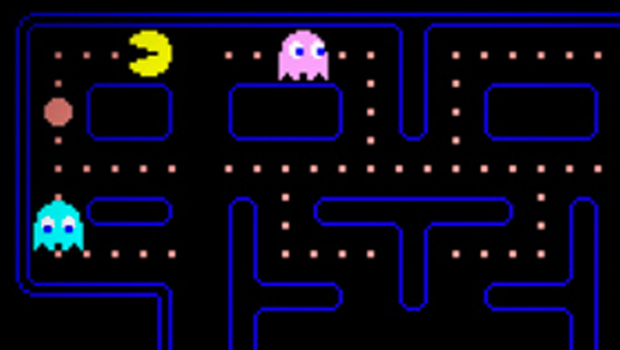
You've probably played Pac-Man dozens of times, cursing the moments when your four ghostly pursuers have chased you into a corner. But what you may not have known is that each erratic, color-coded phantom actually has a mind of its own. Once you know how Blinky, Pinky, Inky, and Clyde tick, predicting their seemingly random movements actually becomes possible.
Weekly digests, tales from the communities you love, and more
Well, almost - Clyde (aka orange or Pokey) was the only enemy programmed to move through the dotted maze in a completely random manner. In truth, it's only Blinky (red, Shadow) that actively chases Pac-Man in the hopes of feasting on his crunchy yellow exterior. Pinky (pink, Speedy) and Inky (cyan, Bashful) have a somewhat stranger directive: All they want is to slink into a position that's 32 pixels away from Pac-Man and his voracious mouth. As you work your way around the stage munching on power pellets, each ghost is trying to figure out how best to approach you, following its own internalized, pre-programmed rules. Though in the case of Clyde, those rules are admittedly "go wherever LOL".
You thought Phanto was unbeatable in Super Mario Bros. 2
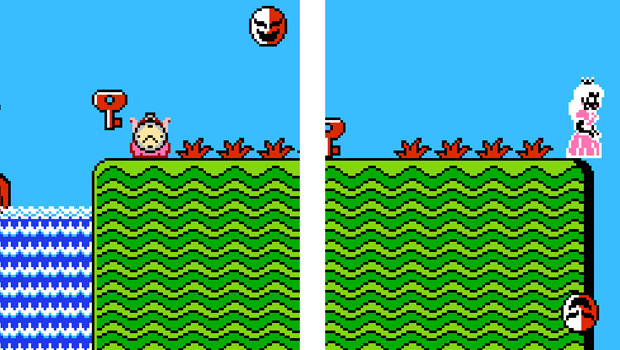
As a young child, the only thing more frightening than the Phanto mask was the prospect of inadvertently peeing in your pants at school. Grab a key and it's only a matter of time before one of the ghastly, silent masks smiling down at you springs to life and chases you to the ends of the earth. Since they were seemingly immune to all of your attacks, all you could really do was run. Phantos were basically Slenderman before Slenderman even existed.
But like most things in life, there is a way to combat this deep-seated fear. Inexplicably, a Power Star alone wont get the job done. You'll need to freeze time using the Stop Watch item (itself gained by uprooting four large vegetables), then death-touch the haunting fade while you're empowered with the invincibility effects of a Star. Of course, if you're still carrying the Phanto's precious key, another one will swoop in to pursue you upon entering the next room. Don't say we didn't warn you.
You didn't achieve top speeds using the Limit Cut in Crazy Taxi
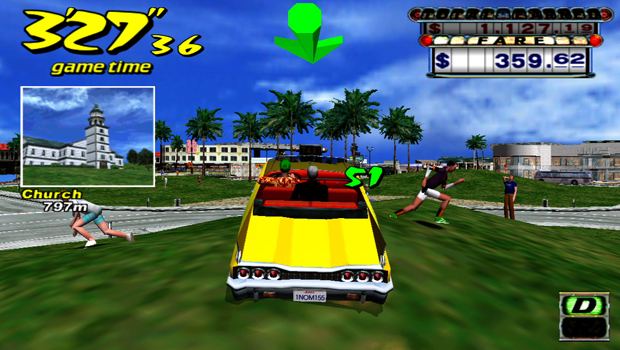
Hey, hey, hey, its time to make some crrrazy money! Are ya ready?! Absolutely not, provided you haven't already familiarized yourself with the hidden Limit Cut technique. In a game as hectic as Crazy Taxi, even the maximum speed of your souped-up cab can feel sluggish when you're frantically racing to cash in your next fare. So why not defy the laws of physics and achieve what your pedal-to-the-metal, all-out horsepower couldn't?
Using a Limit Cut will give your taxi an extra jolt of momentum for a speedy passenger drop-off. To do this, you'll need to achieve your max speed, let off the gas, shift into reverse, then shift back into drive and hit the gas at the same time. In other words: release the triggers, R, short pause, D+Accelerate. The timing's a bit tricky, but once you get the hang of it, you'll be zooming from fare to fare. Now it's time to score some truly crazy money. YAH YAH YAH YAH YAH!
You weren't one-shotting enemy Spartans with the BXR combo in Halo 2

Despite what must've been hours upon hours of bug-testing by Bungie, Halo 2 is positively filled with devious exploits known as button combos. These are near-simultaneous button presses, done in such a rapid succession that they glitch your Spartan's animations and create overpowered advantages in the process. These button combos were immediately labeled as cheating and a bannable offense, but they greatly influenced how Halo 2's firefights were played in both the online and local multiplayer realms.
Chief among these button combos was the BXR, also known as the melee fire. The combo's namesake came from the buttons involved; with the default controller setup and a Battle Rifle, pressing B, X, and R in quick sequence will hit with a melee punch, attempt to reload (canceling the rest of the melee animation), then unload three bullets into your poor target's noggin. That equates to an instant kill, where you've dropped your opponent's shields before immediately headshotting them. This highly unfair tactic was removed from subsequent Halo games, though it did get an official nod via the BXR Mining Corporation in Halo: Reach.
You didn't wavedash circles around your opponents in Super Smash Bros. Melee
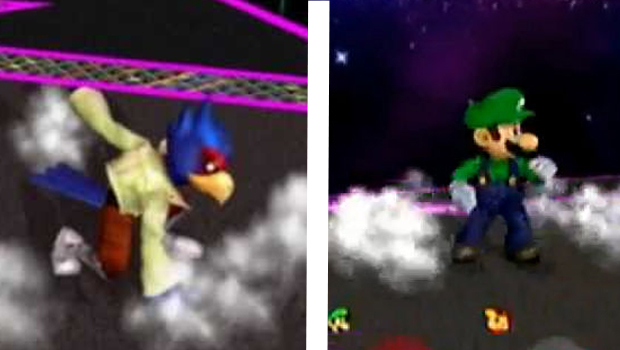
The technique that shaped the hardcore Melee community's playstyle was completely unintentional. If you have any hope of your Marth or Falco reaching his true potential, then complete understanding of how to wavedash is the first step on the road to the winner's circle. Once you've conquered its intricacies, you'll have the godlike power to zip around the stage at an incredible speed, then stop on a dime and bust out a devastating attack. It is, as you might imagine, quite empowering.
At its most basic, wavedashing is the method of repeatedly jumping then instantly air dodging down to the ground at an angle. It looks like you're sliding forward without actually going airborne. This allows you to charge in and bust out a standing attack extremely quickly, while still giving you full access to your shield and sidesteps. You need some pretty nimble fingers to pull this off on command, but once you do, you'll leave casual Smash Bros. competition in the dust.
You weren't speed-strafing in GoldenEye 007
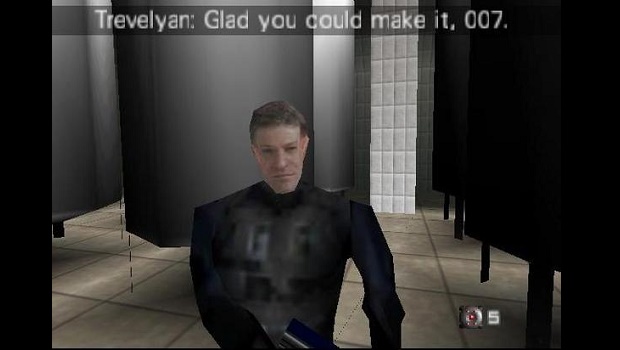
It's one thing to make it through to the end of the tough-as-nails shooter classic GoldenEye 007. It's another to unlock all of the cheats and beat each level in record time. It will take more than simply walking from point A to point B while shooting every Soviet in the face to unlock paintball mode. No, Mr. Bond, I expect you to strafe.
In old first-person shooters like Goldeneye (and even others like Doom), forward movement and strafing were considered two separate values in the game's code, each one having its own speed associated with it. Typically, you wouldn't think to move forward while simultaneously sidestepping, but savvy gamers picked up on the fact that you moved even faster if you held the strafe button while walking forward. This technique is called "speed-strafing" by the speedrunning community, and it's allowed players to get through stages faster than the developers ever anticipated. Oh, and Oddjob's still banned.
Your combos were limited by a lack of Dodge Offsets in Bayonetta

Memorizing combos is an established part of Bayonetta, where the eponymous witch is constantly gaining access to spiffier combos and new bullet arts. But unbeknownst to most - probably because it's never explicitly mentioned in the game at all - there's a way you can modify these combos to your advantage. It's called Dodge Offset, a technique similar to the Negative Edge trick in the Street Fighter series.
Let's say, for instance, you want to incorporate a Dodge Offset into a punch-kick-punch attack string. To pull it off, you need to punch, continue holding down the punch button as you dodge, then release punch and add on the kick-punch bit to complete the combo. This lets you stay mobile while keeping the pressure on your angelic targets, and you can even keep firing your assorted guns as you dodge. As you can imagine, this adds a new wrinkle of complexity to all the combos you thought you already mastered.
GamesRadar+ was first founded in 1999, and since then has been dedicated to delivering video game-related news, reviews, previews, features, and more. Since late 2014, the website has been the online home of Total Film, SFX, Edge, and PLAY magazines, with comics site Newsarama joining the fold in 2020. Our aim as the global GamesRadar Staff team is to take you closer to the games, movies, TV shows, and comics that you love. We want to upgrade your downtime, and help you make the most of your time, money, and skills. We always aim to entertain, inform, and inspire through our mix of content - which includes news, reviews, features, tips, buying guides, and videos.


